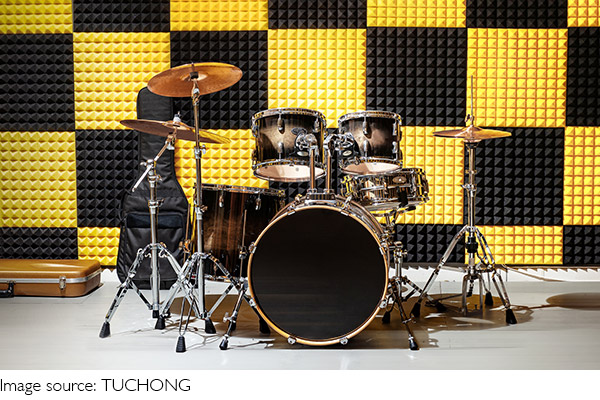Drum Kit Secrets

Have you ever wondered how one person can create such a powerful rhythm on stage? That’s the magic of the drum kit.
It's more than just a collection of drums—it’s a full-on percussion powerhouse. We often see it in bands and performances, but few of us know just how much goes into this fascinating instrument.
The Core Parts of a Drum Kit
A standard drum kit usually includes several key parts: the bass drum, snare drum, tom-toms, floor tom, hi-hat cymbals, and a variety of other cymbals. Each of these plays a different role. For example, the bass drum—controlled by a foot pedal—produces the lowest and deepest sound. It’s the heartbeat of any rhythm. The snare drum, known for its sharp, cracking tone, is often used to keep the beat crisp and clear.
The Mighty Tom-Toms and Floor Tom
Tom-toms come in pairs and are mounted above the bass drum. These drums are round and give a fuller, more resonant tone. The floor tom, on the other hand, stands on its own legs to the side and produces a deeper sound, closer to the bass drum but still distinct. Together, they give drummers a range of tones to create fills and transitions between beats.
The Importance of Cymbals
Cymbals add sparkle and dynamics to any performance. Let’s break them down:
- Hi-hat cymbals sit on a stand and can be opened or closed with a foot pedal. They’re great for steady rhythms and jazzy textures.
- Crash cymbals deliver explosive sound effects, often used during musical climaxes.
- Ride cymbals provide a steady “ticking” sound and help to keep the groove moving.
- Then there are specialty cymbals like the China cymbal, which has a more dramatic, distinctive tone, and the splash cymbal, which offers a quick, bright burst of sound.

How Everything Comes Together
We might think that drumming is just about hitting things in rhythm, but there’s real strategy involved. Drummers use their hands and feet simultaneously. While the hands hold sticks to play the snare, toms, and cymbals, the feet operate the bass drum and hi-hat pedals. It’s like a coordinated dance, and it takes both practice and precision to master.
Drum Sizes and Customization
Each part of the drum kit comes in various sizes. Bass drums usually range from 18 to 26 inches in diameter. Snare drums are typically between 12 to 14 inches wide. Tom-toms and floor toms come in many depths and diameters, depending on the desired sound. The cymbals too can be chosen based on their diameter and thickness. This flexibility allows drummers to build a kit that fits their style—whether they play jazz, rock, or pop.
Why We Love the Drum Kit
The reason we’re so drawn to drum kits is simple: rhythm is universal. Whether we’re tapping our feet or clapping along, beats connect with something primal inside us. The drum kit allows one person to deliver an entire rhythm section. It sets the foundation for the rest of the music, keeping everything together.
Tips for First-Time Drummers
If you’re thinking of learning, start simple. You don't need a massive setup—just a bass drum, snare, hi-hat, and a cymbal are enough to begin with. Use a metronome to keep your timing tight, and don’t rush. Focus on consistency before complexity. And remember, it’s supposed to be fun—so enjoy the process!
Join the Rhythm with Us
Next time you see a drummer in action, take a moment to appreciate how much coordination and creativity it takes. The drum kit isn’t just an instrument—it’s a whole world of rhythm waiting to be explored. Lykkers, have you ever tried drumming before? Or do you have a favorite drum solo? Let’s chat about it below and keep the beat going together!
Guns N'Roses - Sweet Child o mine drum cover by Alan
Video by Alan Music
-
 Snow Photo: 5 Tricks!Think Snow Pics Are Easy? Think Again! These 5 Expert Moves Will Totally Surprise You!
Snow Photo: 5 Tricks!Think Snow Pics Are Easy? Think Again! These 5 Expert Moves Will Totally Surprise You! -
 Lake Shots That Stun!Want Jaw-Dropping Shots? These Tips Will Take Your Lake Photography To The Next Level!
Lake Shots That Stun!Want Jaw-Dropping Shots? These Tips Will Take Your Lake Photography To The Next Level! -
 5 Violin Tips You Need!Want Better Sound Fast? These 5 Violin Hacks Will Totally Change Your Playing! Ready to Try?
5 Violin Tips You Need!Want Better Sound Fast? These 5 Violin Hacks Will Totally Change Your Playing! Ready to Try?